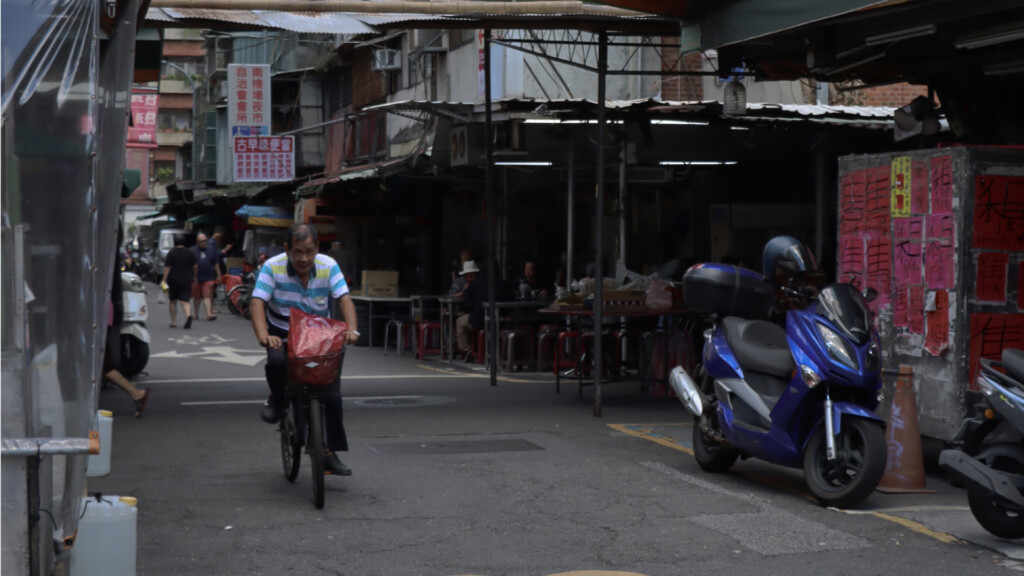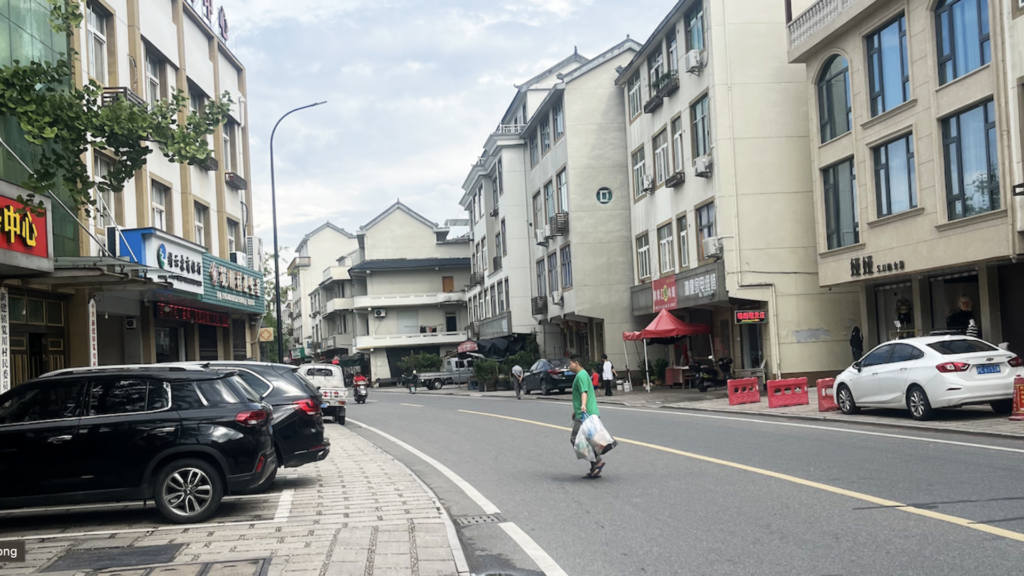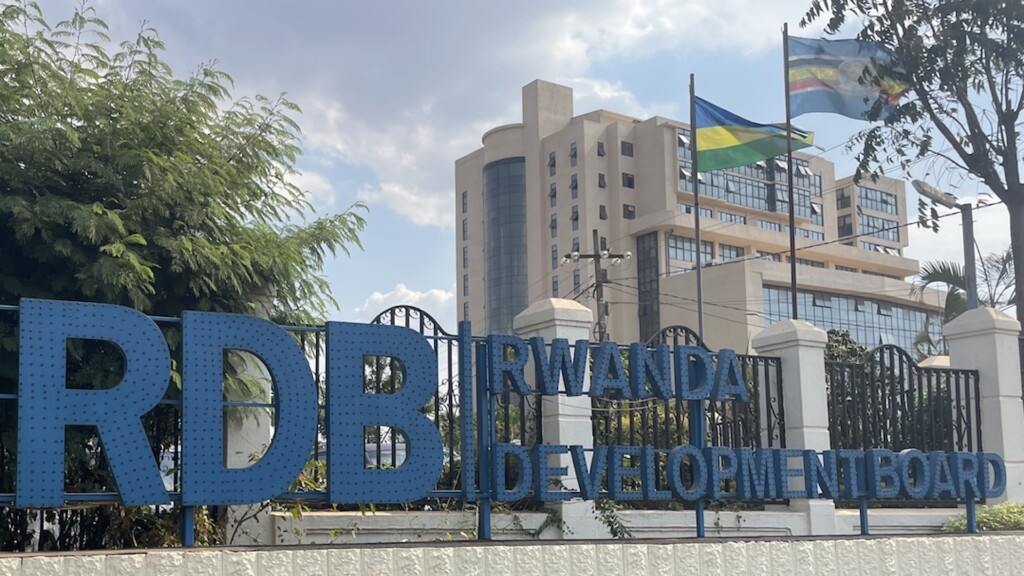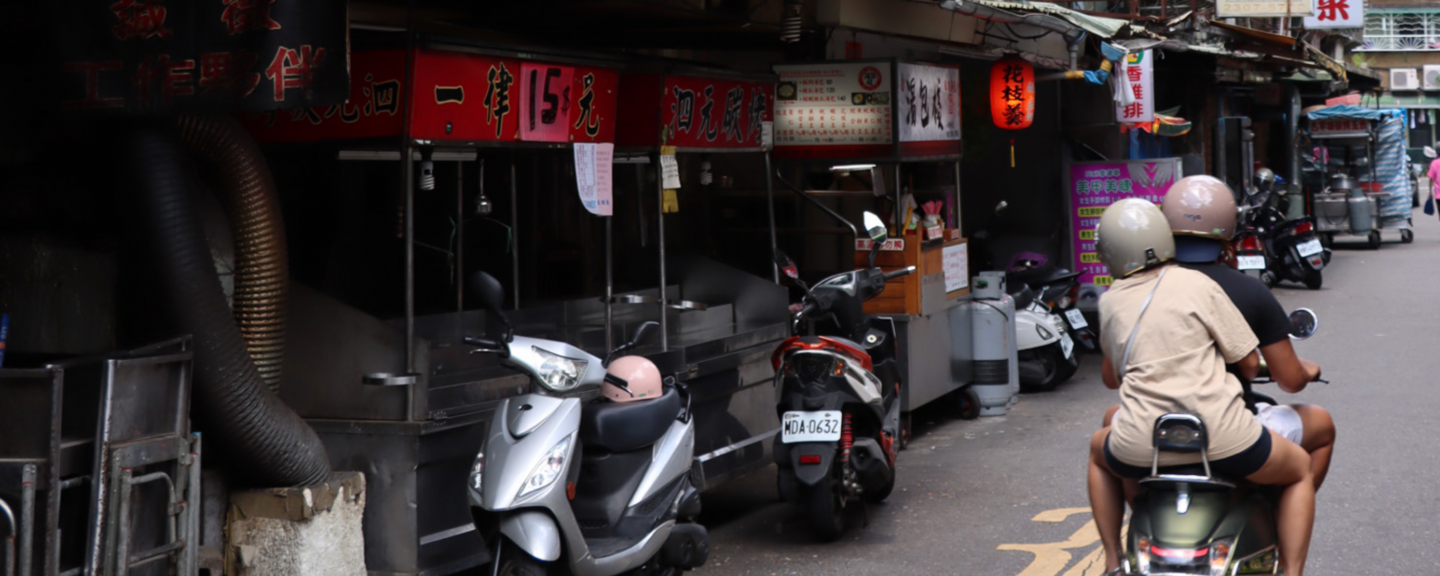Profiling Recipients of Summer Research Grants
from the Fairbank Center for Chinese Studies
This summer, Harvard Graduate School of Design student Robin Albrecht spent two weeks traveling the Taiwan countryside with nothing more than a backpack. “It was fairly small,” he says. “To save on commuting time.”
Albrecht was on a “pilgrimage” to find the Saint Cross Church designed by Pritzker-Prize winning architect Gottfried Böhm. The Prizker is “like the Nobel Prize in architecture,” Albrecht says. And the church? “It’s kind of a pilgrimage for every architecture student.”
Saint Cross was not Albrecht’s only destination. Across two weeks funded by a Fairbank Center for Chinese Studies Summer Research Grant, he sought to understand “informality in buildings” in Taiwan: the alterations and extensions that make rustic Taiwanese storefronts into bespoke architectural phenomena.

Böhm’s church was no different. Upon its completion in the 1950s, the church’s cone-shaped spires pierced the Jingliao village skyline. Subsequent decades brought several rounds of moderations. “They added things to that building that seemed a little bit out of place,” Albrecht says. “Sheds and toilets and things like that.”
Still, Albrecht’s interest in informality led him to look not only at the added toilets and sheds, but between them. “Being in the church—and walking through it, sitting in all different vantage points—was interesting to see how the light enters the building,” he says.
Albrecht quickly found that the best way to research an architectural artifact was to enter it. “It’s a topic that I felt can’t really be researched just by looking at literature, just by looking at photos,” he says.
That afternoon, in Jingliao, Albrecht laid down on a bench in the Saint Cross Church courtyard, staring at the sky. “I stayed there quite a long time,” he says.
Across the Taiwan Strait, Harvard Graduate School of Design student Sophia Xiao spent her August crisscrossing between 25 villages in Zhejiang province. Her Fairbank Center Summer Research Grant project sought to understand how e-commerce-driven villages—and the real estate development patterns that they exhibit—impact Zhejiang villagers’ daily lives.
Xiao found that village buildings tend to have four-and-a-half floors. Villagers rent out the basement and the first floor to e-commerce merchants as a manufacturing space, storage closet, and loading dock. The second floor serves as a living space for rent. The third and fourth remain reserved for villagers.
“This is becoming an internal, very efficient system for people to repurpose it for e-commerce businesses,” Xiao says. “This is quite impressive to me.”

Just as impressive were the e-commerce villages themselves. “If people are going to do research in rural areas first, this will be very different from the urban experience,” Xiao explains. “I found a lot of things that I hadn’t expected or imagined before.” One of those things, she says, was the diversity of responses in each village. “Sometimes you’ll get very warmly welcomed by people, and they will tell you everything…and even invite you for a lunch. But sometimes people will be quiet. People will be a little bit wary about your intention.”
Still, Xiao says the grant offered her an inside look at villages in today’s Zhejiang. “Villages [are] still a very rural, dynamic society,” she says. “People are so closely bonded together.”
“It was quite inspiring,” Xiao adds. “It’s helped me to really know how to conduct research in rural China.”
More than 6,000 miles away, Harvard College senior Garrett O’Brien spent four summer months conducting ethnographic research on Chinese investment in Rwanda. O’Brien—who was co-funded by the Fairbank Center and the Weatherhead Center for International Affairs—passed evenings chatting with his Rwandan host family and workdays interviewing investors and government employees.
“I didn’t really know if that was going to be possible, given the availability and how people would feel about American college students sniffing around their business operations,” he says. “But I was lucky enough to do that.”
At the Rwanda Development Board’s investment division, O’Brien soon gained close access to the projects he sought to study, including a hundred-million-dollar Chinese cement factory built in the southwest region of Rwanda.
“I was able to go to the factory, I was able to meet the Chinese ambassador to Rwanda,” O’Brien says. “It was really interesting.”

Factory visits and diplomats were not the only highlights of O’Brien’s summer. One day, the Rwandan Development Board’s tourism arm invited him to visit the mountain gorillas in northern Rwanda. “They just offered a free trip,” O’Brien says. “It was awesome.”
Back at work, O’Brien was surprised by Chinese investors’ swiftness in approaching Rwandan investment opportunities. “The Chinese investors that I met with were so much more prepared—for not only our meeting, but just in their investment generally—than other investors from other countries,” he says. “They came with their financing ready; they came with their market research studies done. They really just needed our sign-off to go and start their operations.”
Rwandans themselves, O’Brien says, were less sure. “People who weren’t in government were slightly more concerned about the Chinese presence,” he says, given that “there are countries around Rwanda that have not really dealt with Chinese investment in a super productive way.”
Rwandan government officials appeared more confident. “The people in government who had their finger on the pulse a little bit more about the specific Rwanda-China relationship were less concerned,” he says.

Still, O’Brien found his work rubbing up against the larger Chinese economic environment. “I could feel the impact of the perceived economic downturn in China on the ground pretty tangibly,” he says. “There were a lot of investors who I would ask, ‘okay, so why are you doing this now? Why here?’”
The answers he heard surprised him. “It’s like, ‘oh, the Chinese economy doesn’t look great,’” O’Brien says. “There was this idea where the Chinese government was really pushing private investors to branch out, to diversify their markets and to diversify the domestic economy. I really did not expect that,” O’Brien says. “I really did not expect people to be regurgitating lines that I was seeing from American media about the downturns.”
Ultimately, O’Brien’s work will inform his senior thesis as “the bedrock” of what he’s planning this coming year. “The Fairbank Center grant allowed me to fly across the world. It allowed me to live there,” he says. “I really wanted first-hand experience. And I very much got that.”

